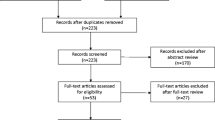Abstract
Background: The Zidex® system is a treatment for stress urinary incontinence comprising four prefilled syringes of non-animal stabilised hyaluronic acid/ dextranomer (NASHA/Dx) gel and the Implacer™ device. This study aimed to investigate utility (patients’ preferences for given health states) with NASHA/Dx gel therapy and to compare resource utilisation of NASHA/Dx gel treatment with tension-free vaginal tape (TVT).
Methods: Utility was measured using EuroQol (EQ-5D), a generic utility instrument. For the cost of NASHA/Dx gel treatment, data were collected prospectively from participants in a 12-month efficacy study (n = 82). Retrospective analysis of a comparable group of patients (n = 77; 3–6 months’ follow-up) was used to obtain equivalent costs for TVT. Costs were analysed for both Sweden and France.
Results: NASHA/Dx gel produced a utility gain of 0.048 at 3 months and 0.014 at 12 months. The estimated mean total 3-month cost per patient with NASHA/Dx gel was €2412 in Sweden and €2005 in France. The corresponding values for 12 months, including 14% of patients undergoing TVT, were €3370-€3417 and €2935-€2976 for Sweden and France, respectively. In comparison, the total costsof treatment with TVT over 3–6 months were €3169-€3504 and €5181-€5471 for Sweden and France, respectively.
Conclusions: NASHA/Dx gel provides utility benefits that are similar to those previously reported for TVT and, depending on the country in which the treatment is performed, are associated with similar or lower overall costs in the short to medium term. From an economic perspective, NASHA/Dx gel could be considered at least as favourable as TVT, pending the availability of long-term effectiveness data.




Similar content being viewed by others
Notes
The use of trade names is for product identification purposes only and does not imply endorsement.
References
Ulmsten U, Henriksson L, Johnson P, et al. An ambulatory surgical procedure under local anesthesia for treatment of female urinary incontinence. Int Urogynecol J Pelvic Floor Dysfunct 1996; 7: 81–6
Ward K, Hilton P. Prospective multicentre randomised trial of tension-free vaginal tape and colposuspension as primary treatment for stress incontinence. BMJ 2002; 325: 67
Chappie CR, Haab F, Cervigni M, et al. An open, multicentre study of NASHA/Dx Gel (Zuidex) for the treatment of stress urinary incontinence. Eur Urol 2005; 48: 488–94
Hampel C, Artibani W, Espuna Pons M, et al. Understanding the burden of stress urinary incontinence in Europe: a qualitative review of the literature. Eur Urol 2004; 46: 15–27
Schwappach DL. Resource allocation, social values and the QALY: a review of the debate and empirical evidence. Health Expect 2002; 5: 210–22
Berman CJ, Kreder KJ. Comparative cost analysis of collagen injection and fascia lata sling cystourethropexy for the treatment of type III incontinence in women. J Urol 1997; 157: 122–4
Oremus M, Collet JP, Shapiro SH, et al. Surgery versus collagen for female stress urinary incontinence: economic assessment in Ontario and Quebec. Can J Urol 2003; 10: 1934–44
Cody J, Wyness L, Wallace S, et al. Systematic review of the clinical effectiveness and cost-effectiveness of tension-free vaginal tape for treatment of urinary stress incontinence. Health Technol Assess 2003; 7: iii, 1–189
EuroQol Group. EuroQol: a new facility for the measurement of health-related quality of life. Health Policy 1990; 16: 199–208
Dolan P, Gudex C, Kind P, et al. A social tariff for EuroQol: results from a UK general population survey. York: Centre for Health Economics, University of York, 1995
Lund University Hospital. Regional price list 2004 [online]. Available from URL: http://www.srvn.org/prislista.htm [Accessed 2005 Apr 11]
FASS. Lakemedel i Sverige (Pharmaceutical Lexicon). Stockholm: Lakemedelsinformation AB, 2004
Statistics Sweden. Statistiska Centralbyran [online]. Available from URL: http://www.scb.se [Accessed 2005 Jul 13]
Nomenclature générale des actes professionnels des médecins, chirurgiens-dentistes, sages-femmes et auxiliaires médicaux. UCANSS mise à jour 2-2003; part II and III. 7 July 2005. Available from URL: http://www.cpam74.fr/464.html [Accessed 2005 Jul 13]
Assurance Maladie en Ligne. Codez les actes de biologie: TNB. Available from URL: http://www.ameli.fr [Accessed 2005 Apr 11]
Agence Technique de l’Information sur l’Hospitalisation. ISA-2004: échelle et coûts de référence 2004. Available from URL: http://www.atih.sante.fr [Accessed 2005 Apr 11]
Institut National de la Statistique et des Etudes. Rapport No. 939: Les salaires dans les entreprises en 2001. 2003 Dec
International Labour Office Bureau of Statistics. LABORSTA Internet [online]. Available from URL: http://laborsta.ilo.org/ [Accessed 2005 Apr 11]
Manca A, Sculpher MJ, Ward K, et al. A cost-utility analysis of tension-free vaginal tape versus colposuspension for primary urodynamic stress incontinence. BJOG 2003; 110: 255–62
Dmochowski RR, Appell R, Bent A, et al. Multicenter randomized controlled study to evaluate Uryx urethral bulking agent in treating female stress urinary incontinence [abstract no. 343]. American Urological Association Annual Meeting; 2004 May 8–13; San Francisco. Available online at http://www.abstracts2view.com/aua_archive/
Lightner D, Calvosa C, Andersen R, et al. A new injectable bulking agent for treatment of stress urinary incontinence: results of a multicenter, randomized, controlled, double-blind study of Durasphere. Urology 2001; 58: 12–5
Acknowledgements
This analysis and the clinical trial on which it is based were funded by Q-Med AB, Uppsala, Sweden. Q-Med were not otherwise involved in the design, analysis and interpretation of the resource and utility data. The authors would like to thank Christopher Chapple, François Haab, Mauro Cervigni, Christian Dannecker and Abdul Sultan for their work in generating the clinical data and collecting the resource utilisation data. The authors have no conflicts of interest that are directly relevant to the content of this study.
Author information
Authors and Affiliations
Corresponding author
Rights and permissions
About this article
Cite this article
Kobelt, G., Fianu-Jonasson, A. Treatment of Stress Urinary Incontinence with Non-Animal Stabilised Hyaluronic Acid/Dextranomer (NASHA/Dx) Gel. Clin. Drug Investig. 26, 583–591 (2006). https://doi.org/10.2165/00044011-200626100-00005
Published:
Issue Date:
DOI: https://doi.org/10.2165/00044011-200626100-00005




